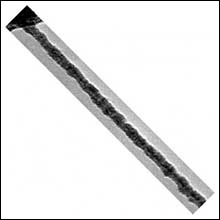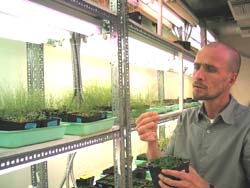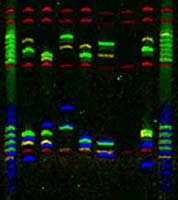Articles and reports from the Life Sciences and chemistry area deal with applied and basic research into modern biology, chemistry and human medicine.
Valuable information can be found on a range of life sciences fields including bacteriology, biochemistry, bionics, bioinformatics, biophysics, biotechnology, genetics, geobotany, human biology, marine biology, microbiology, molecular biology, cellular biology, zoology, bioinorganic chemistry, microchemistry and environmental chemistry.

Findings shed light on the evolution of human cognition, the capacity for long lifespan and the potential for neurodegenerative disease
A research team from the Salk Institute, the Yerkes National Primate Research Center of Emory University and the University of California – Los Angeles (UCLA), has identified genes in the cerebral cortex that differ in levels of activity between humans and nonhuman primates, including chimpanzees and rhesus monkeys. These findings, which appear in the

Size matters, but so does shape, at least in the world of semiconducting nanocrystals, report chemists at Washington University in St. Louis.
Their findings, published in the August 2003 issue of Nature Materials, demonstrate experimentally that the shape of a semiconductor nanocrystal can affect its electronic and optical properties. The study, led by graduate student Heng Yu and William E. Buhro, Ph. D., professor of chemistry in Arts & Science, is the first comprehensive compariso

A team of University of California scientists has identified a gene that controls the production by terrestrial plants of methyl halides, gaseous compounds that contribute to the destruction of ozone in the stratosphere.
The discovery of the gene, detailed in the October 14 issue of the journal Current Biology, is important because it now provides scientists with a genetic tool with which to probe how and why plants produce methyl halides. The identification of the gene should also help res

Appear to “Assimilate” Arm As If it Were Their Own
Researchers at Duke University Medical Center have taught rhesus monkeys to consciously control the movement of a robot arm in real time, using only signals from their brains and visual feedback on a video screen. The scientists said that the animals appeared to operate the robot arm as if it were their own limb.
The scientists and engineers said their achievement represents an important step toward technology that could ena

Discovery shows power of mouse genome to identify human genes for rare genetic diseases
In a small town on Grand Cayman Island in the Caribbean, people are living with a serious neurological disorder, called Cayman ataxia, found nowhere else in the world.
People born with this rare, inherited condition have poor muscle coordination, some degree of mental retardation, uncontrollable head and eye movements and difficulty speaking or walking.
Now, in a discovery that

Mother Goose tells us that boys are made of “snips and snails and puppy dog tails.” She was clearly misinformed about the snails and tails, but she was on to something with the snips. What you really need to build a boy is a “Y” chromosome, and it turns out that SNPs (single nucleotide polymorphisms), known by the biotech cognoscente as simply “snips,” can be helpful in sorting out who fathered the boy. If DNA can be thought of as an instruction book for building a specific person, then SNPs are sing